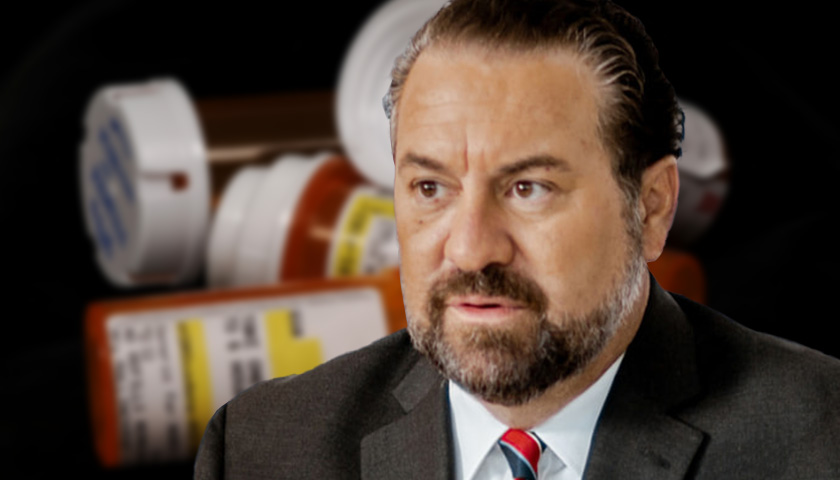Arizona Attorney General Mark Brnovich (R) recently announced two historic multistate settlements, totaling $26 billion, with four pharmaceutical companies over their roles in the opioid crisis.
“We are working to get these opioid abatement funds to local communities as quickly as possible,” Brnovich said in a press release. “They will help facilitate more effective treatment, education, and prevention as our state continues to tackle this heartbreaking crisis.”
The companies involved in the settlements include pharmaceutical distributors Cardinal Health, McKesson, AmerisourceBergen, and manufacturer Johnson & Johnson.
According to Brnovich, the first consent judgment came following investigations into whether the three distributors fulfilled their legal duty of refusing to ship opioids to pharmacies that submitted suspicious drug orders. A second judgment followed a Johnson & Johnson investigation to determine if it misled patients and doctors about the addictive nature of opioid drugs.
In each settlement, all parties deny the allegations against them.
The end result is more than $540 million given to Arizona and its political subdivisions over the next 18 years. The Arizona Attorney General’s Office (AGO) also secured an additional $10 million for Arizona from the distributor’s settlement because the AGO handled the matter without retaining outside help. According to Brnovich, Arizona will receive the additional funds over the next three years.
Furthermore, the AGO outlined a plan which all Arizona counties, cities, and towns agreed upon, called the “One Arizona Opioid Settlement Memorandum of Understanding.” The agreement “ensures funds will be distributed expeditiously across the state and used solely for opioid abatement and treatment,” according to the AGO.
The agreement outlines potential plans for treatment and prevention, including expanding the availability of opioid use disorder (OUD) treatment, providing housing and employment training for people with OUD, supporting non-opioid pain treatment alternatives, and funding community anti-drug coalitions, among many others.
According to statistics from the Arizona Department of Health Services (AZDHS), there have been over 1,300 non-fatal opioid overdoses in 2022, while 372 have died as of May. Demographically, most deaths occur in white males between the ages of 25 and 34.
The Center for Disease Control and Prevention (CDC) revealed that over 100,000 Americans died from opioid overdoses in 2021, including 2,700 Arizonans, a three percent increase from 2020.
As reported by the Arizona Sun Times, the situation at the southern border does not help Arizona’s opioid crisis.
In June, Customs and Border Protection (CBP) officers seized 43 packages of fentanyl hidden in the gas tank of a car at the Calexico West Port of Entry. According to the DEA, 2-3 milligrams of the opioid is a fatal dose for most people, making the reported 54.85 pounds of fentanyl enough to kill over 12 million people. This is one seizure alone.
According to the US Drug Enforcement Administration, illicit fentanyl, primarily produced in Mexico, gets mixed with other drugs like heroin to increase potency. Some users reportedly purchase heroin without realizing it contains fentanyl, which often leads to an overdose death.
– – –
Neil Jones is a reporter for The Arizona Sun Times and The Star News Network. Follow Neil on Twitter. Email tips to [email protected].
Photo “Mark Brnovich” by Mark Brnovich. Background Photo “Opioids” by K-State Research and Extension. CC BY 2.0.





